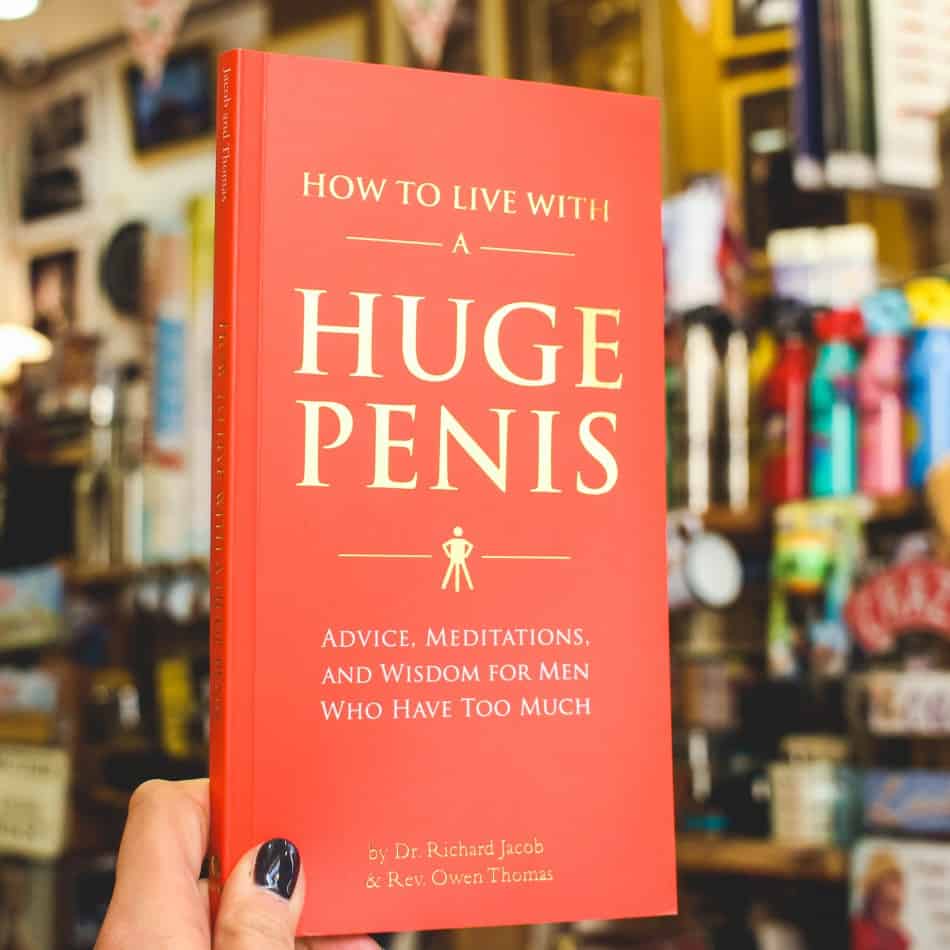In a society often fixated on size and physical prowess, the conversation around intimate topics—especially regarding anatomy—can be fraught with misconceptions, insecurities, and anxiety. The intriguing title “How to Live With a Huge P” immediately captures attention, sparking curiosity and perhaps even trepidation. What does it mean to navigate life with a considerable endowment? This book promises to provide more than just tips; it offers a transformative approach to living confidently and comfortably.
Exploring the essence of this work, readers will find it is not merely a guide but a roadmap towards embracing one’s body. The author delves into the psychological ramifications of having a larger-than-average penis, shedding light on the dualities of pride and potential embarrassment. This exploration acknowledges the societal pressures that can accompany such an anatomical reality, urging readers to reframe their perceptions of masculinity and body image.
The book begins with an engaging preamble that sets the tone for introspection. It draws readers into the narrative, compelling them to reassess what they believe about size and its implications. Right from the start, it invokes intriguing questions: How does size affect relationships? Are men who possess larger appendages perceived differently? Through meticulous analysis and anecdotal narratives, the author lays the groundwork for a shift in perspective, prompting readers to think critically about societal norms.
Continuing into the core chapters, the text articulates how men can cultivate self-acceptance. An impressive amalgamation of personal stories and theoretical insights reveals the common struggles faced by men with larger penises, such as fear of inadequacy in intimate settings or disconcerting attention in public environments. Each narrative serves to disarm and normalize these experiences, allowing readers to identify and relate.
Readers are continually encouraged to embrace a mindset of curiosity rather than insecurity. By exploring the physiological aspects of a larger penis, the book demystifies some of the myths that surround it. It provides factual information regarding anatomy, function, and even sexual health. From discussing potential challenges in finding the right fit in clothing to addressing issues of comfort during physical activities, the author tackles these practical concerns head-on.
Perhaps the most liberating aspect of this book lies within its approach to intimacy and relationships. The author forthrightly addresses the art of communication with partners about desires, preferences, and boundaries. It emphasizes that vulnerability can foster greater intimacy and understanding. Readers are prompted to view discussions around size not as a point of contention, but rather as an opportunity for bonding and authenticity.
This book doesn’t shy away from sexuality, diving deep into the vascular mechanics of arousal and the emotional connections that accompany physical encounters. It provides insights into how to enhance sexual experiences for both partners, advocating for mutual pleasure over comparison. Ideas on different positions, techniques, and the importance of consent are explored, creating a well-rounded perspective on the subject of lovemaking with a larger appendage.
In yet another engaging segment, the author highlights the often-overlooked significance of mental well-being. It underscores how confidence can profoundly influence not just physical interactions but also broader life domains. Strategies to bolster one’s self-esteem are woven throughout the narrative, ensuring that the reader feels equipped to tackle the multifaceted aspects of their identity.
Furthermore, the book doesn’t merely dwell on challenges; it triumphantly celebrates the advantages of having a larger penis. The author presents various contexts where this attribute can be seen as advantageous, ranging from enhanced sensations to increased attraction. Each assertion is backed by relatable anecdotes, making the content both entertaining and enlightening.
As the narrative unfolds, the theme of community emerges. The book encourages readers to connect with others who share similar experiences, fostering a supportive network that can provide encouragement and camaraderie. Discussion groups, online forums, and workshops are recommended as potential avenues for exploration and connection. This sense of belonging reinforces the idea that nobody is alone in their journey, paving the way for shared growth and understanding.
Towards the conclusion, a poignant summation reinforces the central theme: living with a huge penis is not merely about physical attributes, but about embracing one’s identity wholly. The author implores readers to redefine masculinity on their own terms, moving away from societal impositions toward self-acceptance. The final pages serve as a call to action, inviting readers to envision a life where confidence and authenticity reign, rather than insecurity and comparison.
Ultimately, “How to Live With a Huge P” emerges as a vital text for anyone navigating the complexities of body image, intimacy, and self-acceptance. Its comprehensive blend of emotional depth, humor, and practical advice creates a refreshing narrative that resonates on multiple levels. More than a mere guide, it is an invitation to embark on a journey of self-discovery, offering readers the tools they need to thrive in a world that often emphasizes the superficial.
This book not only piques curiosity but also promises a vigorous shift in perspective. It encourages readers to reclaim their narrative and embrace their uniqueness, ultimately leading to a fulfilling, confident life. Such a discourse is not just essential; it is empowering—a celebration of the human experience in all its intricate forms.
